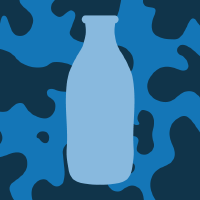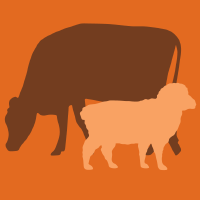Topic Menu
► Topic MenuTopic Editors

Practical Methods for Accommodating Behavioral Needs and Improving the Wellbeing of Both Farm Animals
Topic Information
Dear Colleagues,
Decades of research clearly show that animals that live in a barren environment should have environmental enrichments. When animals are able to engage in natural behaviors, their welfare is improved. The emphasis in this Topic will be on enrichments that are both effective and practical to implement. For example, research has clearly shown that straw is an excellent environmental enrichment for pigs. The problem is that straw is not available in some parts of the world, and it may clog the waste management systems in slatted floor systems. This issue will include papers on both effective substitutes for straw and the latest information on practical group housing systems for sows.
Another animal welfare concern that is receiving increasing public attention is removing newborn calves from dairy cows. Researchers will be invited to present research on effective methods for keeping calves with dairy cows. In the poultry industry, there has been a rapid evolution of housing systems to replace small battery cages for laying hens. Numerous studies have shown that there are advantages and disadvantages to different types of loose housing systems. Authors will be invited to present information on practical systems that work.
This topic will consist of my introductory paper, authors invited by the editor, and readers who can contribute innovative, practical methods to improve animal wellbeing. This is especially important for farm animals living in intensive systems. Preventing suffering is not sufficient for the best animal welfare. Research clearly shows that animals should have opportunities to engage in positive emotional experiences. Some of the topics that will be covered in this topic are:
- Pros and cons of different types of group housing for sows;
- Dairy calf rearing systems;
- Grooming brushes for cattle;
- Devices for enriching intensively raised pigs;
- Enrichment devices for broiler chickens;
- Pros and cons of different types of enriched housing for laying hens.
The emphasis in this issue will be on enrichment methods that will be effective in commercial systems. There is a need for practical methods for both large commercial systems and small-scale farms. This issue can help provide guidance to animal welfare officers that are now being hired by many commercial companies.
Prof. Dr. Temple Grandin
Dr. Kurt Vogel
Topic Editors
Keywords
- animal welfare
- environmental enrichment
- cattle
- pigs
- poultry
- broilers
- laying hens
- calves
- behavior
Participating Journals
| Journal Name | Impact Factor | CiteScore | Launched Year | First Decision (median) | APC | |
|---|---|---|---|---|---|---|

Agriculture
|
3.6 | 3.6 | 2011 | 17.7 Days | CHF 2600 | Submit |

Animals
|
3.0 | 4.2 | 2011 | 18.1 Days | CHF 2400 | Submit |

Dairy
|
- | 2.4 | 2020 | 24.6 Days | CHF 1200 | Submit |

Ruminants
|
- | - | 2021 | 20.9 Days | CHF 1000 | Submit |

Veterinary Sciences
|
2.4 | 2.3 | 2014 | 19.6 Days | CHF 2600 | Submit |

MDPI Topics is cooperating with Preprints.org and has built a direct connection between MDPI journals and Preprints.org. Authors are encouraged to enjoy the benefits by posting a preprint at Preprints.org prior to publication:
- Immediately share your ideas ahead of publication and establish your research priority;
- Protect your idea from being stolen with this time-stamped preprint article;
- Enhance the exposure and impact of your research;
- Receive feedback from your peers in advance;
- Have it indexed in Web of Science (Preprint Citation Index), Google Scholar, Crossref, SHARE, PrePubMed, Scilit and Europe PMC.


